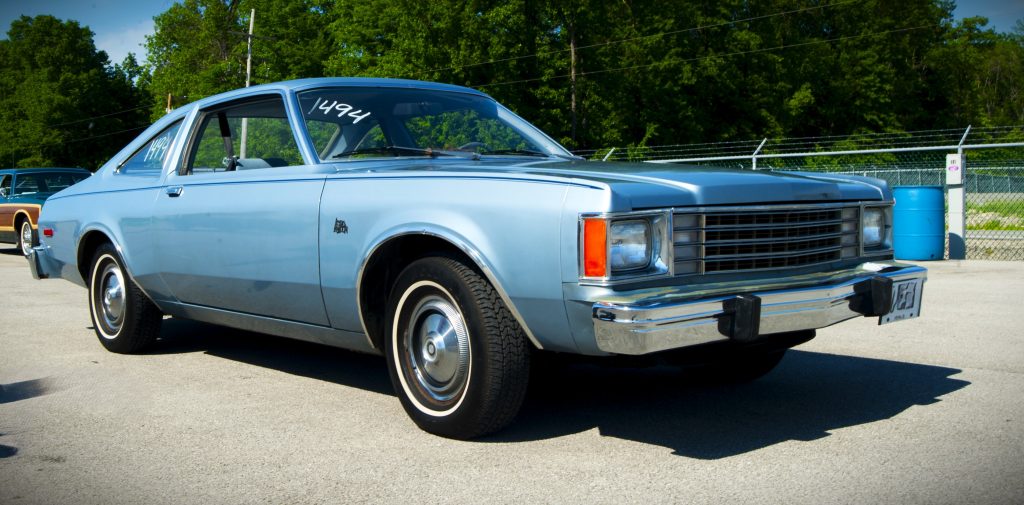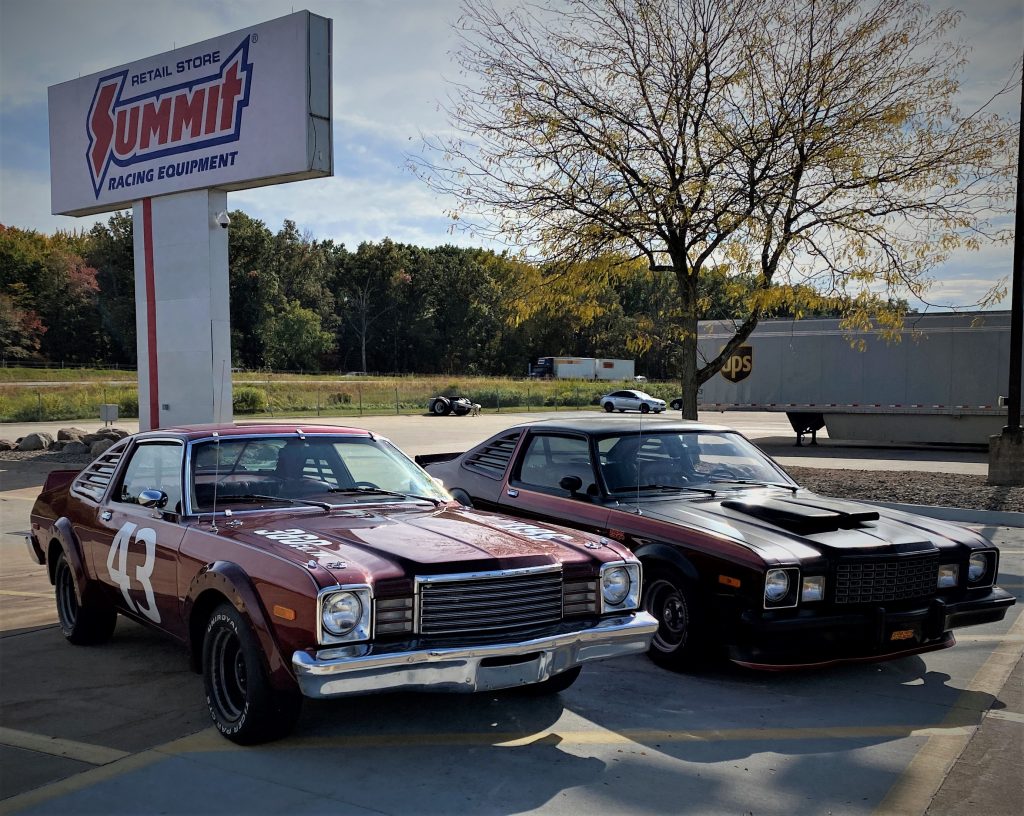
OK, so maybe Dodge picked the name Aspen because of the town in Colorado and not the species of deciduous trees, but let us take a look at this oft-forgotten branch of the Mopar musclecar family tree.
***
Introducing the 1976 Dodge Aspen
Designed to replace the aging Dodge Dart, the Aspen was introduced in 1976 as a more slimmed down, compact car from Dodge. And like a lot of Mopar models, it had some twins: the Chrysler LeBaron and the Plymouth <Sergio Franchi Voice> Volaré </Sergio Franchi Voice>.

It’s also worth noting that, even with the Aspen on showroom floors, Dodge Dart production continued in 1976 for a one-year overlap of the two models.
The Aspen was Dodge’s attempt to lure customers with a new, modern car, boasting both an improved ride quality and better fuel economy than the A-Body Mopars it replaced. You could get the Aspen in several configurations, including a coupe, sedan, and a four-door wagon.

Problem was, it suffered from some quality control issues and the Dodge Aspen never enjoyed much mainstream popularity. Fortunately for Chrysler, the far more successful K-Cars arrived on the scene in the early 1980s, pushing both the Aspen and Volare into 1970s obscurity.
The Aspen’s Performance Potential
But despite only being on the market for a few years, the Aspen sprouted its own performance variant: the Aspen R/T.

Now, granted this was the 1970s, where power was down across the board, but you could still get your R/T with Chrysler’s 360 small block. Publications at the time recorded sub 18-second quarter-mile ETs with this configuration, which put the Aspen R/T on par with a V8-equipped Camaro from the same era.

On paper though, the recipe for better performance was there: long hood, short deck, front engine, and rear-wheel drive with a solid axle.

That meant that Aspens became a common sight on dragstrips all over the nation, where simple bolt-on modifications like cylinder heads, exhaust headers, and stickier tires made Aspens potent performers. And they could be made durable too, with stronger axles, upgrades to the Chrysler TorqueFlite 3-speed automatic, and stiffer springs.

Aspen In Pursuit, Repeat, Aspen in Pursuit!
If you’re binge-watching old cop shows from the 1970s, you may spy one of the Dodge Aspen/Plymouth Volare Police Pursuit vehicles.

These Police-only models could be optioned with the 360 LA small block too. The cop car also got heavy duty suspension bits, like sway bars front and rear, along with beefier shocks and springs. And of course, it got cop brakes that featured semi-metallic front brake pads and a unique proportioning valve to ensure proper brake balance.
A lot of these heavy duty upgrades found their way onto fleet service and taxi vehicles, where the Dodge Aspen was a popular choice as well.
Turbine Power
It’s absolutely worth mentioning that Chrysler shoved a turbine engine under the hood of a few Aspens, to further the company’s experimentation with turbine powerplants. Chrysler’s fascination with turbine power started back in the early 1960s, and culminated in dozens of turbine cars being built.

While the program launched with hand built customs, it eventually transitioned to stuffing engines into modified Chrysler’s production vehicles. Subpar gas mileage and poor emissions ultimately shuttered the program in the late 1970s, but not before a few Dodge Aspens got outfitted with turbine propulsion.
Wait, There was a Chrysler Aspen Too?

Yep, starting in 2007, the Aspen name was applied to a Chrysler SUV. The Chrysler Aspen was essentially an upscale version of the Dodge Durango, and gave the Chrysler lineup its only SUV at the time. But it didn’t really sell very well, lasting only two model years until being discontinued in 2009.
And while a lot of Mopar purists took umbrage over the thought of a Chrysler-branded Aspen, it’s still a clever name considering both Aspen and Durango are cities in Colorado. Pretty meta there, Chrysler.
So How’d it Get the Name Aspen in the First Place?

Perhaps we should close our Aspen homage the way we started.
The name is derived from the city in Colorado, because Dodge marketers thought it would make a nice, outdoorsy sounding name for a car. Dodge advertising folks even lined-up sponsorships with several high profile ski events in the area to cement that sentiment.
So, not a tree. A city.
But we thought you’d find a Dodge Aspen story a tad more interesting than one about the Sequoia—no offense, Toyota.

Super Cool
My mom drove a dodge Aspen when I was a kid.
Mine had a t top
Mom & Dad had a green Aspen and my brother had a mustard yellow Aspen in the 70’s. Without a doubt, the worst cars any of us remember owning when it comes to reliability and performance. Still lots of fun memories of caravan road trips out west in these cars, with a walkie-talkie in each car to communicate haha.
One of my high school buddies older brother had an Aspen RT with the 318. He would kick my old 72 Monte Carlo with a 350 in the a$$. Better gears and lighter weight, beat me every time.